GRTgaz and Mines Paris - PSL launch a joint research laboratory on hydrogen: Défi H
On the occasion of Mines Paris Research Day 2022, GRTgaz, the main gas transmission operator committed to the energy transition, and Mines Paris - PSLa leading French engineering school, have signed a five-year partnership for research in the field of hydrogen, resulting in the creation of a joint laboratory, Défi H. Intended to study the effects of hydrogen on structural materials, Défi H will generate new thesis work and develop new technological tools through close collaboration between the teams.A partnership resolutely focused on the energy transition, consolidating France's ambitions in the field of hydrogenThrough its RICE Research and Development center, GRTgaz has maintained a close relationship with Mines Paris - PSL for several years, through Chairs, theses and projects involving doctoral students, post-doctoral students, specialized masters and interns. Recently, and after several studies on the impacts of hydrogen on steels, GRTgaz and MINES Paris - PSL have embarked on more ambitious projects: the Gas Economy Chair, the Prothycol project (Protection of pipes using Coldspray technology, winner of the 2018 Open Innovation award), the Precos project (Repair of pipes using Coldspray). An industrial ANR chair MESSIAH (Mini-Tests for the In-Service Monitoring of Structures with Application to Hydrogen Transport) has even been created.
The major role that hydrogen will play in the decarbonization of industry and transportation is being confirmed day by day. A network adapted to hydrogen by converting existing structures costs two to three times less than a new network. By enabling the interconnection between consumption and production points and access to underground storage, this dedicated network will effectively support the development of a hydrogen market in France.
With Défi H, GRTgaz and Mines Paris - PSL wish to strengthen the synergies of research and training activities related to the protection and aging of hydrogen transport networks.
The main objective of this partnership is to develop work and common actions around several axes:
- detailed knowledge of the characteristics of energy transport materials;
- new methods of analysis of the characteristics of materials, based on the sampling of mini-coupons without destroying the original support;
- analysis of the effects of hydrogen on materials;
- the study of the prospects for the future of gas networks and the gas economy.
GRTgaz and Mines Paris - PSL will be able to pool their research and collaborate on several test beds that make up Défi H, The RICE Fenhyx platform will also be made available for the needs of Mines Paris - PSL researchers who will be able to generate new academic knowledge. Fenhyx is a unique experimental platform for determining the effects of hydrogen, alone or in a mixture, on metallic specimens, and under pressure.
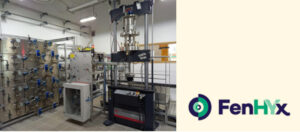
"Research has always played a key role in GRTgaz's business plan. This kind of collaboration allows us to develop knowledge sharing between the academic and industrial worlds, and to bring researchers closer to the economic challenges of the years to come, namely the development of hydrogen and its transportation by pipeline. Hydrogen is the energy of the future and it is logical that GRTgaz should surround itself with high-level researchers in order to prepare together for the energy transition of tomorrow."
Anne-Sophie Decaux, Technical Director - Head of Industrial Performance and New Technologies at GRTgaz.
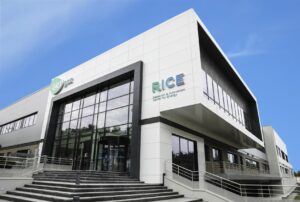
"I am very pleased with this new agreement - which further strengthens the ties between Mines Paris and GRTgaz - and underscores our commitment to the benefit of industry, business and society - in the search for solutions for the energy transition and collective progress towards a carbon neutral world."
Vincent Laflèche, General Manager of Mines Paris - PSL

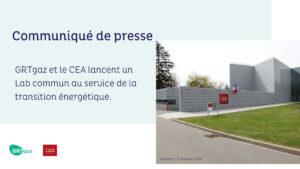 Download the press release by following the
Download the press release by following the 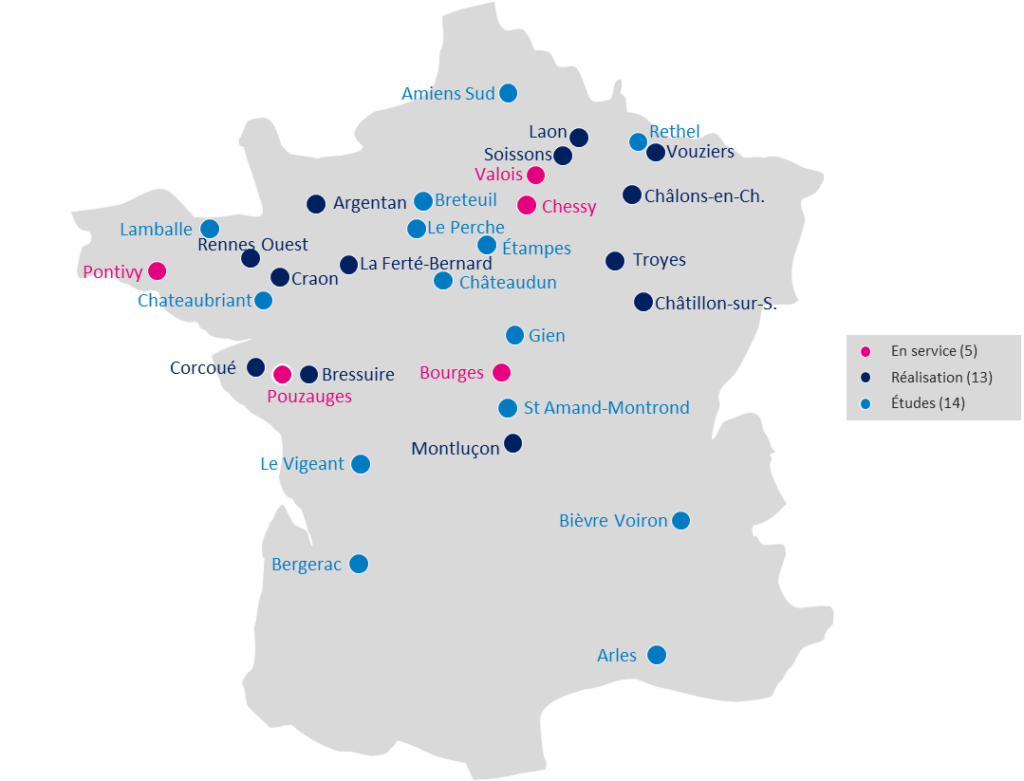
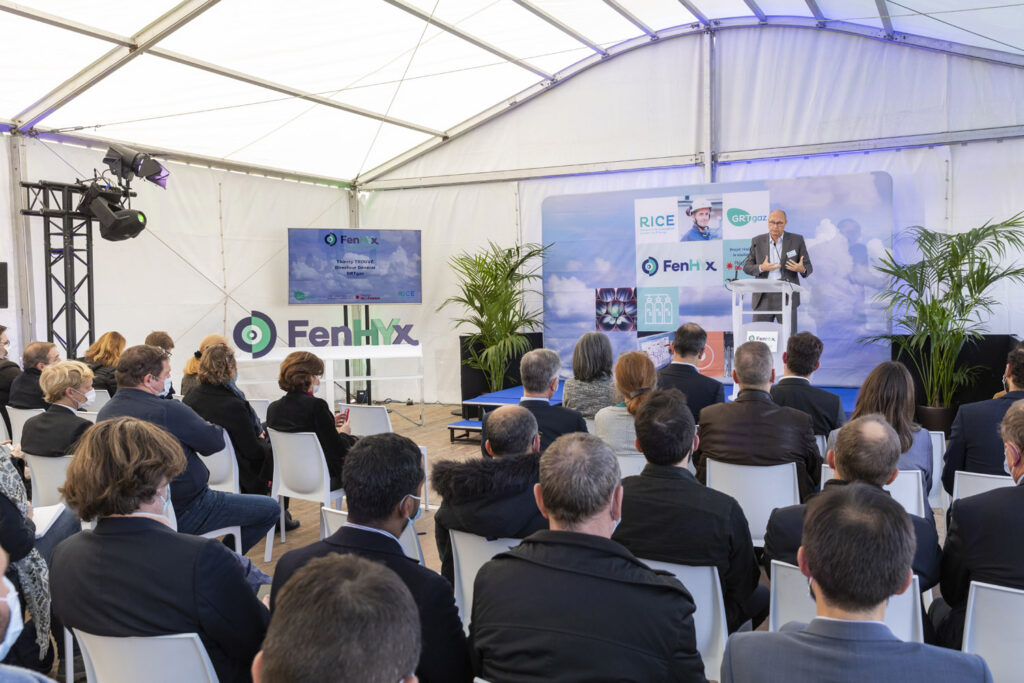 The inauguration brought together many energy players, committed institutional leaders, GRTgaz and RICE employees... to discover the on-site testing facilities and gain a better understanding of the new issues surrounding hydrogen.
The inauguration brought together many energy players, committed institutional leaders, GRTgaz and RICE employees... to discover the on-site testing facilities and gain a better understanding of the new issues surrounding hydrogen.
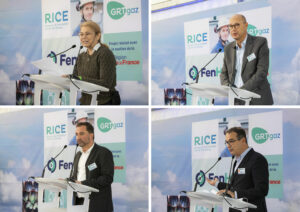
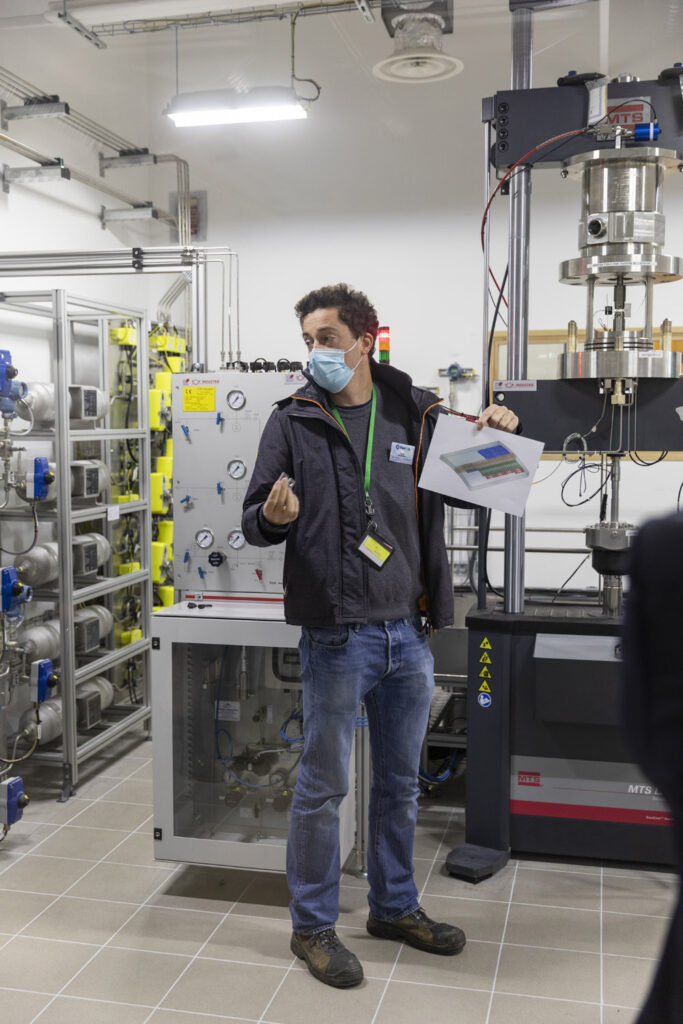
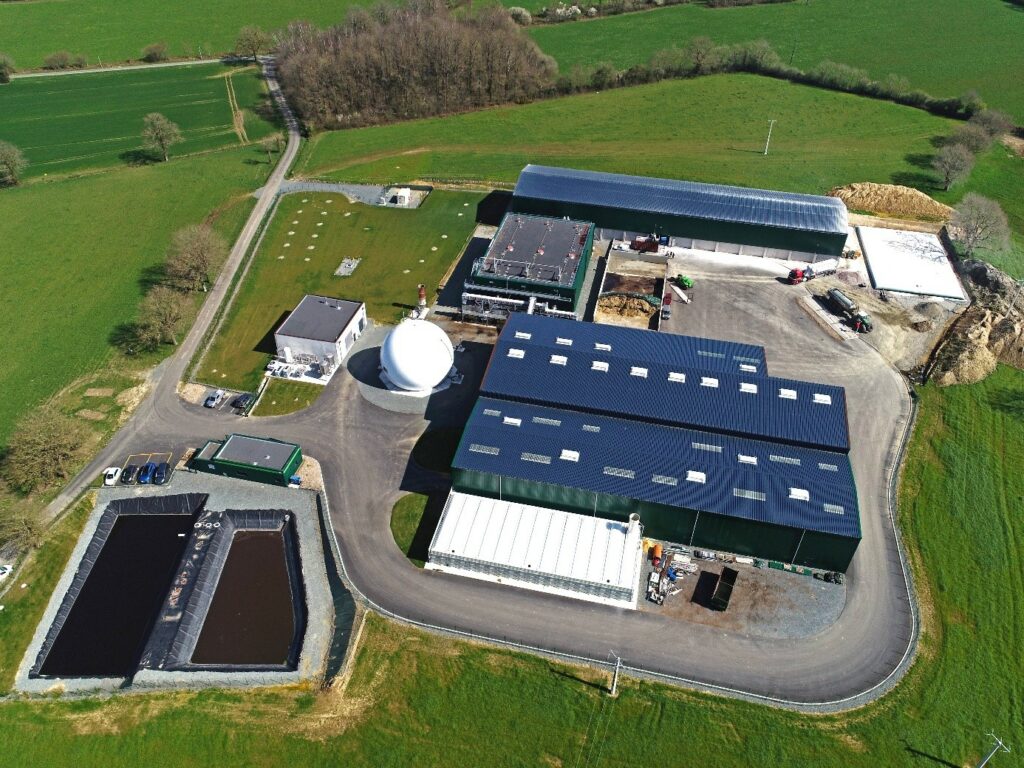 For example, when the volume of biomethane injected into a distribution network is too large to be consumed locally, a backflow facility must be installed to bring the gas up to the transmission network.
In order to prepare for the gradual increase in decentralised biomethane production in the years to come, GRTgaz needs to develop a long-term vision of the necessary investments.|To address this issue, GRTgaz has developed the Biozone tool. It is a decision support tool based on Operational Research techniques such as linear programming. Following the realization in 2019 of a first "prototype" version by GRTgaz's Gas System Department, with the help of SIA Partners' EnergyLab, the further development and industrialization of the tool have been taken over by RICE, GRTgaz's R&D center, with its skills in applied mathematics and tool development.
Biozone's objective is to determine the best possible connection for each biomethane production unit to the transmission or distribution network. The tool can also choose to install backflaw facility on the distribution network and compressors on the transport network when locally, the volumes of the units connected to it require it.
Results are obtained in minutes to meet the operational requirements of users.
Several major challenges had to be overcome during the development of the tool such as :
For example, when the volume of biomethane injected into a distribution network is too large to be consumed locally, a backflow facility must be installed to bring the gas up to the transmission network.
In order to prepare for the gradual increase in decentralised biomethane production in the years to come, GRTgaz needs to develop a long-term vision of the necessary investments.|To address this issue, GRTgaz has developed the Biozone tool. It is a decision support tool based on Operational Research techniques such as linear programming. Following the realization in 2019 of a first "prototype" version by GRTgaz's Gas System Department, with the help of SIA Partners' EnergyLab, the further development and industrialization of the tool have been taken over by RICE, GRTgaz's R&D center, with its skills in applied mathematics and tool development.
Biozone's objective is to determine the best possible connection for each biomethane production unit to the transmission or distribution network. The tool can also choose to install backflaw facility on the distribution network and compressors on the transport network when locally, the volumes of the units connected to it require it.
Results are obtained in minutes to meet the operational requirements of users.
Several major challenges had to be overcome during the development of the tool such as :